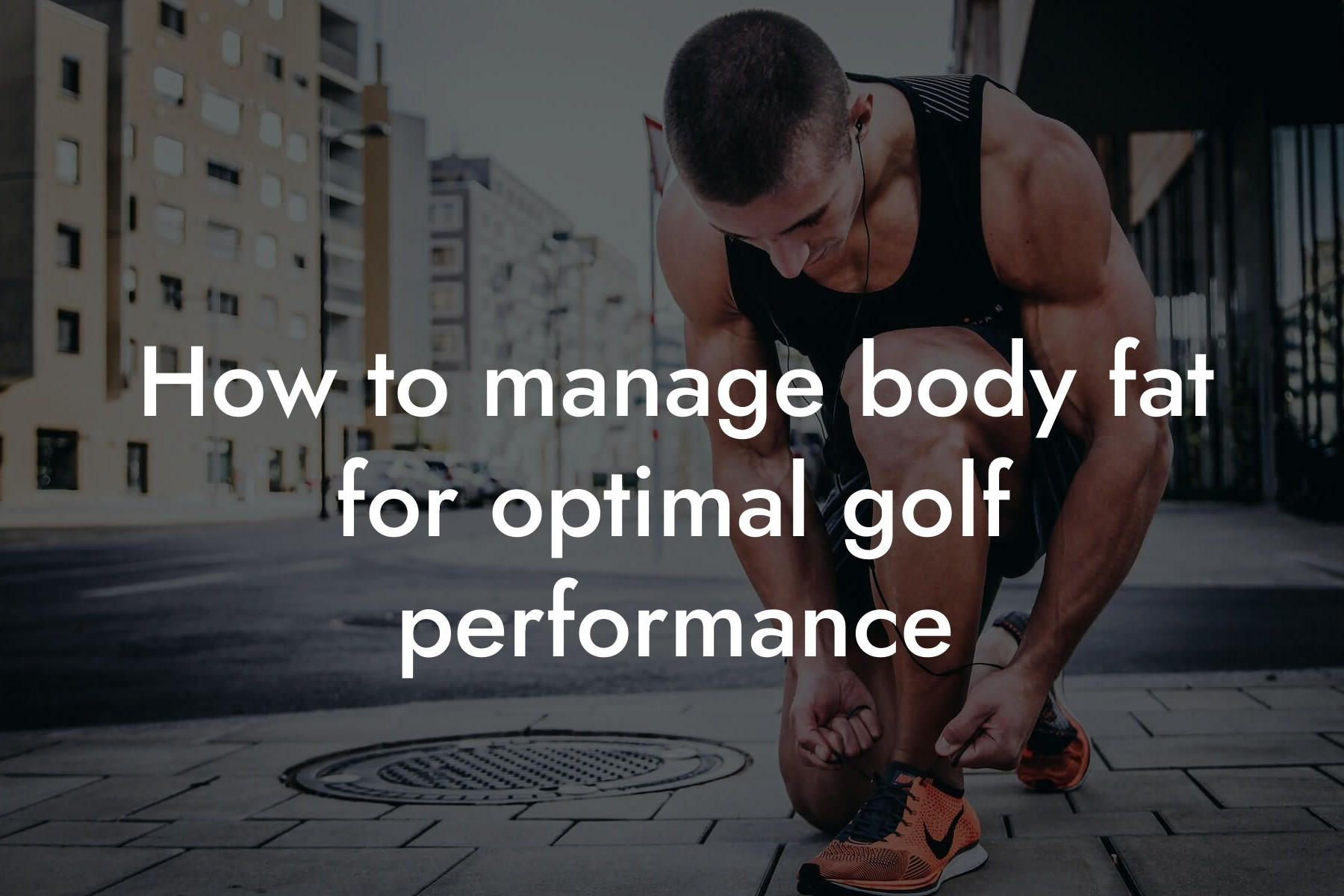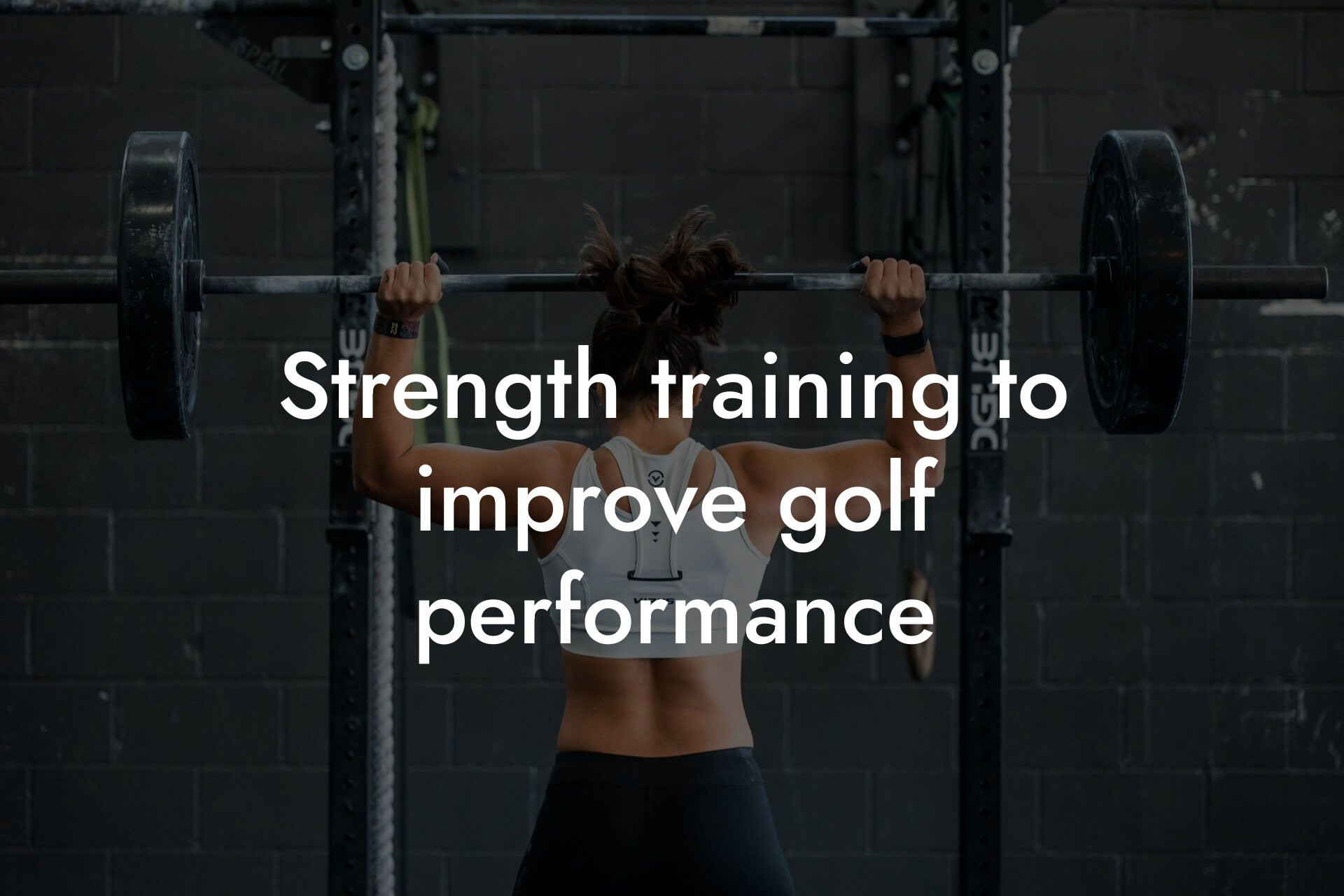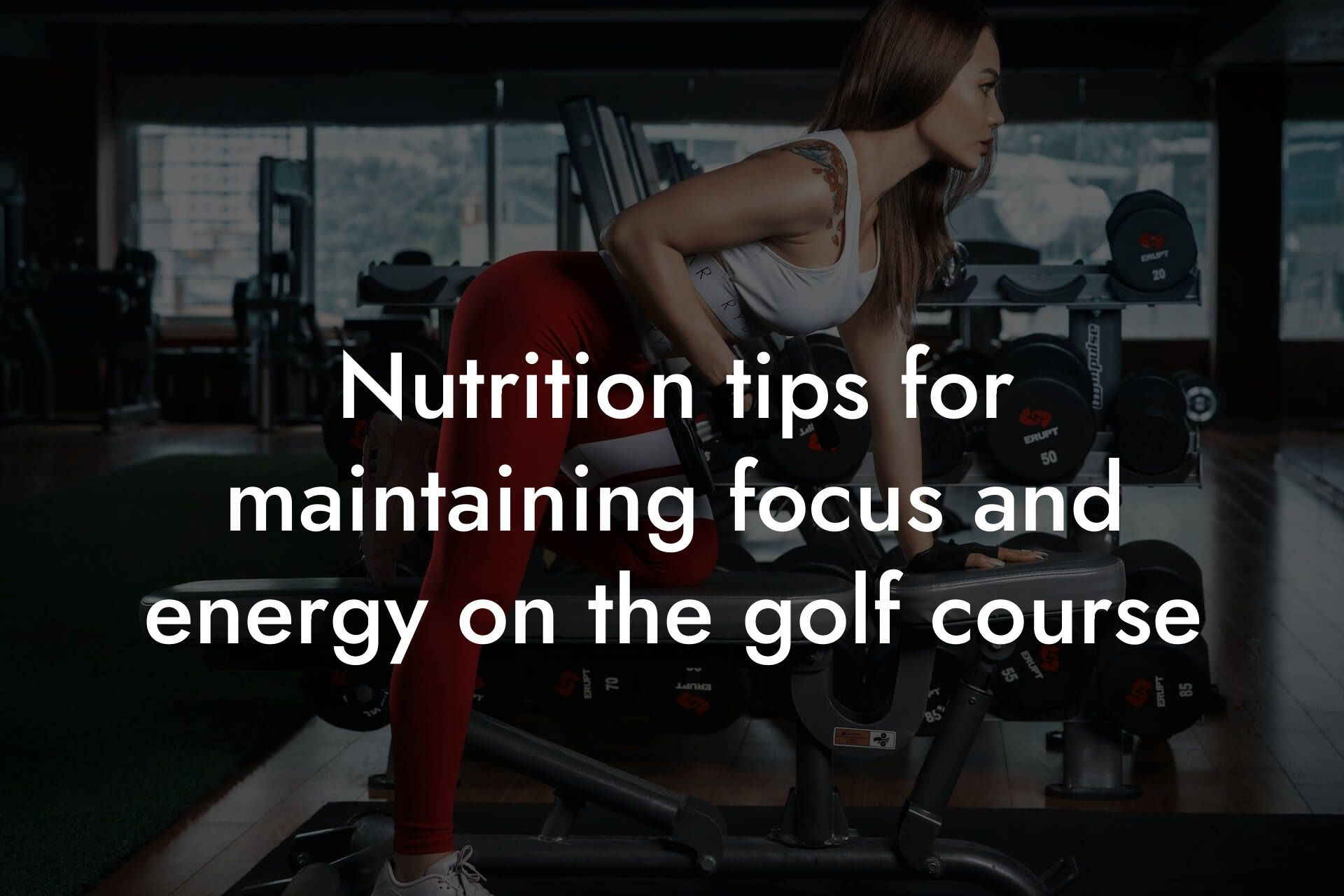As a high-earning professional, you understand the importance of maintaining a healthy physique to excel in your career and personal life. When it comes to golf, having a strong and flexible body is crucial to achieve a better swing and improve your overall game. In this article, we'll delve into the importance of flexibility and muscle mass for golfers and provide you with practical tips and exercises to help you achieve a more efficient and effective golf swing.
Table of Contents
- Understanding the Importance of Flexibility in Golf
- The Role of Muscle Mass in Golf Performance
- Assessing Your Current Flexibility and Muscle Mass
- Exercises to Improve Flexibility for Golf
- Exercises to Build Muscle Mass for Golf
- Incorporating Flexibility and Strength Training into Your Golf Routine
- Nutrition and Recovery for Optimal Flexibility and Muscle Mass
- Frequently Asked Questions
Understanding the Importance of Flexibility in Golf
Flexibility is a critical component of a golfer's overall fitness. It enables you to maintain a full range of motion, generate power, and maintain balance throughout your swing. When you're flexible, you can rotate your torso, hips, and shoulders more efficiently, resulting in a more consistent and accurate shot. Additionally, flexibility helps reduce the risk of injury, particularly in the back, shoulders, and elbows, which are common areas of strain in golfers.
The Role of Muscle Mass in Golf Performance
Muscle mass plays a vital role in generating power, speed, and distance in your golf swing. Having sufficient muscle mass, particularly in your core, legs, and glutes, enables you to generate more force and momentum, resulting in longer drives and more accurate shots. Moreover, muscle mass helps stabilize your body throughout the swing, reducing the risk of injury and improving overall control.
Assessing Your Current Flexibility and Muscle Mass
Before you start working on improving your flexibility and muscle mass, it's essential to assess your current levels. At Tano Performance Group, we use a DEXA machine to provide a comprehensive body assessment, including measurements of body fat, muscle mass, and bone density. This information helps you identify areas for improvement and track your progress over time.
Exercises to Improve Flexibility for Golf
Here are some exercises to help improve your flexibility for golf:
1. Chest Stretch: Stand in a doorway with your hands on the doorframe at shoulder height. Lean forward until you feel a stretch in your chest and shoulders. Hold for 30 seconds and repeat three times.
2. Shoulder Rolls: Roll your shoulders forward and backward in a circular motion. Repeat for 10-15 repetitions.
3. Hip Flexor Stretch: Kneel on all fours with your hands under your shoulders and your knees under your hips. Take one knee out to the side and rest it on the ground, keeping your other knee bent at a 90-degree angle. Lean forward, stretching the front of your hip. Hold for 30 seconds and repeat three times on each side.
4. Hamstring Stretch: Sit on the floor with your legs straight out in front of you. Lean forward, reaching for your toes, and hold for 30 seconds. Repeat three times.
Exercises to Build Muscle Mass for Golf
Here are some exercises to help build muscle mass for golf:
1. Squats: Stand with your feet shoulder-width apart and your hands by your sides. Lower your body down into a squat, keeping your back straight and your knees behind your toes. Push back up to the starting position. Repeat for 10-15 repetitions.
2. Lunges: Stand with your feet together and take a large step forward with one foot. Lower your body down into a lunge, keeping your back straight and your front knee behind your toes. Push back up to the starting position. Repeat on the other side. Repeat for 10-15 repetitions on each side.
3. Deadlifts: Stand with your feet shoulder-width apart and hold a weight or barbell with your hands shoulder-width apart. Lower your body down, keeping your back straight and your knees slightly bent, and lift back up to the starting position. Repeat for 10-15 repetitions.
4. Planks: Start in a push-up position with your hands shoulder-width apart and your body in a straight line from head to heels. Hold for 30-60 seconds, engaging your core muscles.
Incorporating Flexibility and Strength Training into Your Golf Routine
To see significant improvements in your golf swing, it's essential to incorporate flexibility and strength training into your regular routine. Aim to dedicate 2-3 times per week to flexibility exercises and 2-3 times per week to strength training. Additionally, make sure to warm up properly before each golf session, including light cardio and dynamic stretching to get your muscles ready for the game.
Nutrition and Recovery for Optimal Flexibility and Muscle Mass
A well-balanced diet and proper recovery techniques are crucial to support your flexibility and muscle mass goals. Focus on consuming lean protein sources, complex carbohydrates, and healthy fats to fuel your body. Additionally, make sure to stay hydrated by drinking plenty of water throughout the day.
In terms of recovery, prioritize getting enough sleep (7-9 hours per night) and taking rest days as needed. You can also incorporate techniques like foam rolling, massage, and stretching to help your body recover from intense exercise and golf sessions.
Maintaining flexibility and muscle mass is crucial for a better golf swing. By incorporating exercises to improve flexibility and build muscle mass, assessing your current levels, and prioritizing nutrition and recovery, you can take your golf game to the next level. Remember to stay consistent, patient, and committed to your training, and you'll see significant improvements in your overall performance.
Frequently Asked Questions
What is the importance of flexibility in golf?
Flexibility is crucial in golf as it allows for a full range of motion, enabling golfers to maintain a consistent swing plane and generate more power. Inflexibility can lead to a restricted swing, resulting in decreased distance, accuracy, and overall performance.
How does muscle mass impact my golf game?
Muscle mass plays a significant role in generating power, speed, and control in golf. Having adequate muscle mass, particularly in the core, legs, and glutes, helps to stabilize the body and generate force, resulting in more consistent and powerful shots.
What are the benefits of maintaining flexibility and muscle mass for golf?
Maintaining flexibility and muscle mass can improve overall golf performance, increase driving distance, enhance accuracy, and reduce the risk of injury. It can also improve overall physical fitness and well-being, allowing golfers to enjoy the game for years to come.
What are the common areas of inflexibility in golfers?
Common areas of inflexibility in golfers include the hips, lower back, shoulders, and hamstrings. These areas are critical for maintaining a full range of motion and generating power in the golf swing.
How can I improve my flexibility for golf?
Improving flexibility for golf requires a combination of stretching exercises, strengthening exercises, and proper warm-up and cool-down routines. Focus on exercises that target the hips, lower back, shoulders, and hamstrings, such as lunges, leg swings, and shoulder rotations.
What exercises can I do to build muscle mass for golf?
Exercises that target the core, legs, and glutes are essential for building muscle mass for golf. Examples include squats, deadlifts, lunges, and leg press. Additionally, exercises that target the shoulders and back, such as rows and lat pulldowns, can help improve overall stability and power.
How often should I exercise to maintain flexibility and muscle mass for golf?
Aim to exercise at least 2-3 times per week, with a focus on flexibility exercises 2-3 times per week and strength training exercises 1-2 times per week. Consistency is key, so try to establish a regular exercise routine that you can stick to.
What is the best way to warm up before a round of golf?
A proper warm-up before golf should include a combination of light cardio, stretching, and dynamic movements. Examples include jogging, jumping jacks, leg swings, and arm circles. Aim to warm up for at least 15-20 minutes before teeing off.
How can I prevent injuries while playing golf?
Preventing injuries while playing golf requires a combination of proper warm-up and cool-down routines, adequate flexibility and strength, and proper swing mechanics. Additionally, taking regular breaks, staying hydrated, and managing stress can help reduce the risk of injury.
What are the common mistakes golfers make when it comes to flexibility and muscle mass?
Common mistakes golfers make include neglecting to warm up and cool down properly, failing to incorporate flexibility and strength exercises into their routine, and ignoring areas of inflexibility and weakness. Additionally, overtraining and poor swing mechanics can also lead to injury and decreased performance.
How can I incorporate flexibility and strength exercises into my busy schedule?
Incorporating flexibility and strength exercises into a busy schedule requires creativity and commitment. Try breaking up exercises into shorter sessions, incorporating exercises into daily activities, and finding exercises that can be done at home or on the go.
What are the benefits of working with a fitness professional for golf?
Working with a fitness professional can help golfers develop a personalized exercise routine tailored to their specific needs and goals. A fitness professional can also provide guidance on proper form and technique, helping to prevent injuries and improve overall performance.
How can I track my progress and measure the effectiveness of my exercise routine?
Tracking progress and measuring the effectiveness of an exercise routine can be done through a variety of methods, including tracking flexibility and strength gains, monitoring swing speed and distance, and using wearable fitness trackers or mobile apps.
What are the best exercises for improving flexibility in the hips and lower back?
Exercises that target the hips and lower back include lunges, leg swings, and hip circles. Additionally, exercises that target the glutes, such as glute bridges and hip thrusts, can help improve flexibility and strength in these areas.
How can I improve my balance and stability for golf?
Improving balance and stability for golf requires a combination of exercises that target the core, legs, and glutes. Examples include single-leg squats, balance boards, and BOSU ball training.
What are the benefits of incorporating plyometric exercises into my golf fitness routine?
Plyometric exercises, such as jump squats and box jumps, can help improve power, speed, and explosiveness in golf. These exercises can also help improve overall athleticism and reaction time.
How can I maintain flexibility and muscle mass during the off-season?
Maintaining flexibility and muscle mass during the off-season requires a consistent exercise routine that targets the core, legs, and glutes. Additionally, incorporating stretching and foam rolling exercises can help maintain flexibility and reduce muscle soreness.
What are the best stretches for improving flexibility in the shoulders and upper back?
Stretches that target the shoulders and upper back include shoulder rolls, chest stretches, and upper back extensions. Additionally, exercises that target the rotator cuff, such as shoulder rotations and shoulder blade squeezes, can help improve flexibility and strength in these areas.
How can I incorporate golf-specific exercises into my fitness routine?
Golf-specific exercises, such as rotational exercises and weighted club swings, can help improve power, speed, and control in golf. These exercises can be incorporated into a fitness routine 1-2 times per week, focusing on exercises that target the core, legs, and glutes.
What are the benefits of using resistance bands for golf fitness?
Resistance bands can provide a convenient and portable way to improve strength and flexibility for golf. They can be used to target the core, legs, and glutes, and can be incorporated into a fitness routine at home or on the go.
How can I stay motivated and consistent with my exercise routine for golf?
Staying motivated and consistent with an exercise routine for golf requires setting specific goals, tracking progress, and finding a workout buddy or fitness professional for accountability. Additionally, incorporating variety and fun into an exercise routine can help keep motivation levels high.
What are the benefits of incorporating yoga or Pilates into my golf fitness routine?
Incorporating yoga or Pilates into a golf fitness routine can help improve flexibility, balance, and core strength. These exercises can also help reduce muscle tension and improve overall physical awareness and body control.
How can I use technology, such as fitness trackers or mobile apps, to improve my golf fitness?
Technology, such as fitness trackers or mobile apps, can provide a convenient and effective way to track progress, monitor swing speed and distance, and receive personalized coaching and feedback. These tools can help golfers stay motivated and consistent with their exercise routine.
Here are some related articles you might love...
- How to manage body fat for optimal golf performance
- Strength training to improve golf performance
- Nutrition tips for maintaining focus and energy on the golf course
- The impact of body composition on golf swing power and accuracy
- The role of core strength in golf accuracy
- Bone density and injury prevention in golf
- Recovery strategies for golfers after a tournament
- Off-season fitness programs for golfers
- How DEXA scans can benefit professional golfers
Zak Faulkner
Zak Faulkner is a leading authority in the realm of physical health and body composition analysis, with over 15 years of experience helping professionals optimise their fitness and well-being. As one the experts behind Tano Performance Group, Zak has dedicated his career to providing in-depth, science-backed insights that empower clients to elevate their physical performance and overall health.
With extensive knowledge of DEXA technology, Zak specializes in delivering comprehensive body assessments that offer precise data on body fat, muscle mass, bone density, and overall physique. His expertise enables individuals to make informed decisions and achieve their fitness goals with accuracy and confidence. Zak’s approach is rooted in a deep understanding of human physiology, combined with a passion for helping clients unlock their full potential through personalised strategies.
Over the years, Zak has earned a reputation for his commitment to excellence, precision, and client-focused service. His guidance is trusted by top professionals who demand the best when it comes to their health. Whether advising on fitness programs, nutritional strategies, or long-term wellness plans, Zak Faulkner’s insights are a valuable resource for anyone serious about taking their health and fitness to the next level.
At Tano Performance Group, Zak continues to lead our Content Team revolutionising how professionals approach their physical health, offering unparalleled expertise that drives real results.




